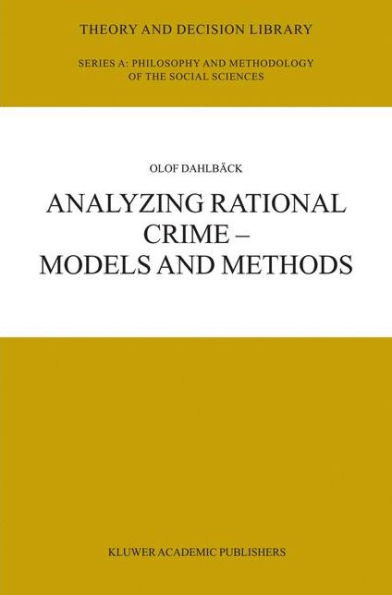Analyzing Rational Crime - Models and Methods
Olof Dahlbäck's book breaks new ground for the analysis of crime from a rationality perspective by presenting models and methods that go far beyond those with which researchers have hitherto been equipped. The book examines single crimes, individual criminality, and societal crime, and it discusses thoroughly the general decision theoretical presuppositions necessary for analyzing these various types of crime. An expected utility maximization model for a single discrete choice regarding the commission of a crime is the foundation of most of the analyses presented. A version of this model is developed that permits interpersonal comparisons, and this basic model is used when deriving more complex models of crime as well as when analyzing the potential for such derivations. The rigorous, powerful methods suggested provide considerable opportunities for improving research and for seeing old problems in a new light.
1107753844
Analyzing Rational Crime - Models and Methods
Olof Dahlbäck's book breaks new ground for the analysis of crime from a rationality perspective by presenting models and methods that go far beyond those with which researchers have hitherto been equipped. The book examines single crimes, individual criminality, and societal crime, and it discusses thoroughly the general decision theoretical presuppositions necessary for analyzing these various types of crime. An expected utility maximization model for a single discrete choice regarding the commission of a crime is the foundation of most of the analyses presented. A version of this model is developed that permits interpersonal comparisons, and this basic model is used when deriving more complex models of crime as well as when analyzing the potential for such derivations. The rigorous, powerful methods suggested provide considerable opportunities for improving research and for seeing old problems in a new light.
109.99
In Stock
5
1

Analyzing Rational Crime - Models and Methods
218
Analyzing Rational Crime - Models and Methods
218
109.99
In Stock

Product Details
| ISBN-13: | 9781402016578 |
|---|---|
| Publisher: | Springer Netherlands |
| Publication date: | 10/31/2003 |
| Series: | Theory and Decision Library A: , #36 |
| Edition description: | 2003 |
| Pages: | 218 |
| Product dimensions: | 8.27(w) x 11.69(h) x 0.02(d) |
From the B&N Reads Blog
